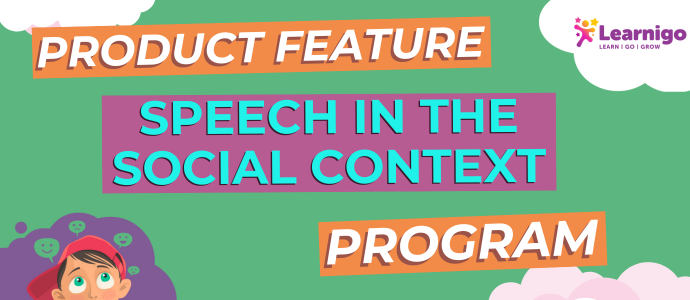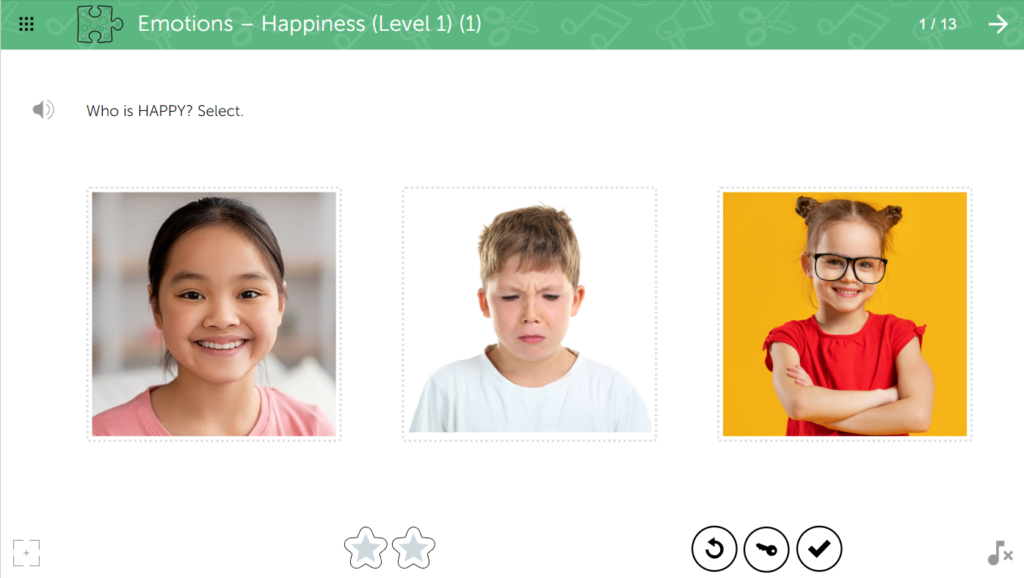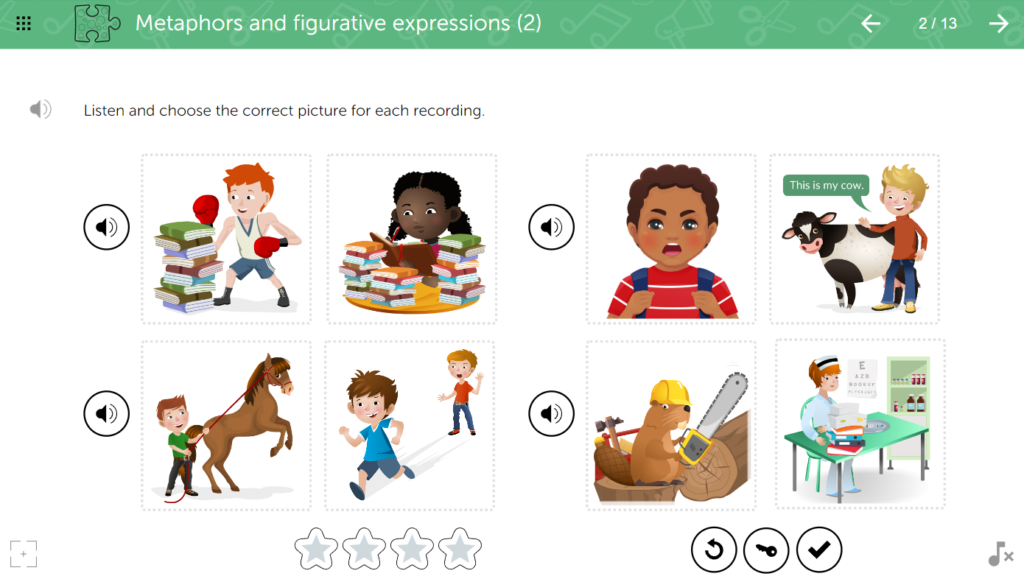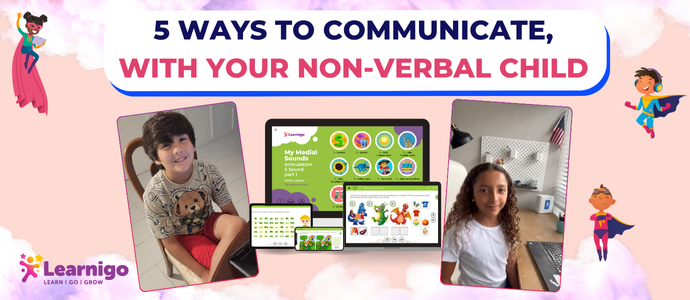5 Ways to Communicate with Your Non-Verbal Child
June 5, 2025
Thomas Talbot
June 7, 2024
0

Happy Summer, Learnigo Learners!
Pragmatic language, also known as social communication, helps us navigate our verbal and nonverbal interactions with others. By its nature, communication involves at least two communication partners to engage between the message sender and the message receiver. Oftentimes, we can be both the sender and the receiver in a single conversation, so it helps to understand how social interactions flow.
Learnigo’s Speech in the Social Context program is designed to provide a solid foundation for social communication skills, along with ample opportunities to practice these skills in motivating and, engaging life-like contexts.
Difficulties with receptive, expressive, and/or pragmatic language can exist independently or co-exist with other disorders, such as autism spectrum disorders (ASD), developmental delay, or specific learning disability. Language development delays are one of the first signs of ASD (Mody & Belliveau, 2013). Specifically, children with ASD have difficulty understanding and using pragmatic, receptive, and expressive language.
Because children with ASD have difficulty with pragmatic skills, it is important to consider that social communication abilities will present differently for a child with ASD. Social communication may be more task-driven (e.g., demands, protests) instead of social in nature ( Mody & Belliveau, 2013) . Since we learn language through socializing, some of the precursors of language (e.g., joint attention) may be impacted by ASD as well.
It can be worrisome when a child is not engaging in social interactions as expected. Some pragmatic language difficulties can be spotted early on (e.g., lack of joint attention), while others may be observed once the child begins talking. Some signs that can indicate the possible presence of a pragmatic language disorder include:
Here are the some tips to foster social skills in children:
1. 👨👩👧👦 Model Social Behavior
– Be a Role Model: Demonstrate positive social interactions in your daily life. Children learn a lot by observing adults. It can help to explicitly explain social interactions, too. For example: When we are greeting someone we know, it’s nice to ask, “how are you?” It makes people feel good and shows that you care about their feelings.
2. 🗣️ Teach Specific Social Skills
– Practice Greetings and Eye Contact: Teach children how to greet others, introduce themselves, and maintain appropriate eye contact during conversations.
3. 👫 Encourage Playdates
-Organize and Monitor Playdates: Arrange regular playdates with peers and be available to guide and mediate interactions as needed.
4. 📚 Use Social Stories and Role-Playing
– Create and Discuss Scenarios: Write or find social stories and role-play different social situations to practice appropriate responses and outcomes.
5. 🏃♀️ Join Group Activities
– Enroll in Clubs or Teams: Encourage participation in group activities like sports, scouts, or art classes to build social skills in a structured setting.
6. ❤️ Teach Empathy and Communication
– Discuss Emotions and Active Listening: Talk about recognizing emotions in oneself and others, and teach the importance of active listening and expressing thoughts and feelings clearly and respectfully.
The Speech in the Social Context program is a set of interactive digital and printable activities that teach and help practice social skills. The activities are designed to help children/students with ASD,, intellectual disabilities, and other communication difficulties. It can be used in therapy and/or special education classes, individually or in small groups.
The Learnigo EDU & SLP: Speech in the Social Context program consist of:
Some of the skills targeted in the program include:
The program is based on interactive exercises, colorful illustrations, and age-appropriate instructions. There is evidence indicating that children respond positively to digital games, citing increased engagement and practice opportunities (Ahmed, & Kirrie J. Ballard, 2018).
Some of the activities included in the program are:
Here are some example activities:



Learnigo’s Speech in the Social Context can help students understand the rules of social communication. From perspective-taking to figurative language exercises, your students will have plenty of opportunities to practice.
The Learnigo Speech in the Social Context program is an excellent online resource for students needing engaging and fun ways to improve their social skills. Therapists and educators alike agree that this is the perfect on-the-go resource for a busy Wednesday in the classroom or clinic. Let Learnigo alleviate your back-to-school load so you can enjoy your summer without a back-to-school list!
We invite you to use this FREE lesson plan based on the Speech in the Social Context program to see how you can use the activities with your students today!
Get access to the entire Speech in the Social Context program (as well as our other programs for therapists and educators) with our free trial!
If you want more personalized help, schedule a 1:1 call with our product consultants, who can show you the features of Learnigo, help you choose what’s best for your practice, and answer any questions!
We’d love to hear from you! Let us know what you like (or where we can improve) at feedback@learnigo.com.
Stay in touch by signing up for our email list to receive the latest updates such as new programs, freebies, and promotions.
Follow our socials for more updates:
References
Mody, Maria and John W. Belliveau. “Speech and language impairments in Autism: Insights from behavior neuroimaging.” North American Journal of Medicine & Science, 5, no. 3 (2013): 157-161. doi:10.7156/v5i3p157.
Ahmed, Beena, Penelope Monroe, Adam Hair, Chek Tien Tan, Ricardo Gutierrez-Osuna, and Kirrie J. Ballard. “Speech-driven Mobile Games for Speech Therapy: User Experiences and Feasibility.” International Journal of Speech Language Pathology (2018): 1-15, doi: 10.1080/17549507.2018.1513562.

June 5, 2025

May 8, 2025